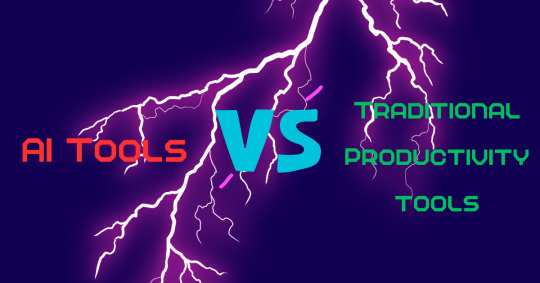#WorkplaceTechnologies
Explore tagged Tumblr posts
Text
0 notes
Text
Beyond Zoom: The Evolution of Digital Communication
Zoom fatigue is real—and it’s a symptom of a larger transformation.
We’ve entered an era where digital communication is no longer just about connecting—it’s about creating meaning, presence, and culture across screens. From async video tools to virtual whiteboards, AI-powered meeting assistants, and spatial audio platforms, communication is evolving far beyond traditional video calls.
At CorporateOne, we believe the future of communication is flexible, human-centered, and immersive. It’s not just about being online—it’s about being truly present in new, smarter ways.
As digital-first work becomes the norm, organizations must rethink how teams collaborate, share ideas, and build relationships—without burnout.
📡 The next wave of digital communication?
Context-rich messaging
Virtual collaboration hubs
AI-curated knowledge
Emotionally intelligent interfaces
Let’s go beyond Zoom—toward a digital experience that actually works for humans.
👉 Learn more about designing the future of work at 🌐 www.corporate.one
#DigitalCommunication#FutureOfWork#RemoteWork#HybridWork#ZoomFatigue#WorkplaceTechnology#CorporateOne#VirtualCollaboration#DigitalTransformation#HumanCenteredDesign#WorkCulture#CommunicationTools#Productivity#AIinWorkplace
0 notes
Text
Future of Work: Remote, Hybrid & AI-Driven


The Future of Work: Remote, Hybrid, and AI-Powered
Future of Work: Remote, Hybrid & AI-Driven. The workplace has undergone a profound transformation in recent years, reshaped by global disruptions, technological leaps, and shifting employee expectations. In 2025, the future of work is no longer a distant idea—it’s a reality defined by remote flexibility, hybrid models, and AI-driven efficiency. So, what does this new landscape look like, and how are businesses adapting? 1. Remote Work: Here to Stay Future of Work: Remote, Hybrid & AI-Driven. The rise of remote work during the pandemic was seen as a temporary solution, but it has now become a permanent fixture in many industries. Companies have realized the benefits—reduced overhead costs, wider talent pools, and increased employee satisfaction. Tools like Zoom, Slack, and Notion have matured, enabling smooth collaboration across time zones. However, challenges remain, such as digital fatigue and maintaining company culture. To address these, organizations are investing in virtual engagement strategies and asynchronous workflows. 2. Hybrid Work: The Best of Both Worlds Future of Work: Remote, Hybrid & AI-Driven. Hybrid models, blending remote and on-site work, are becoming the standard. This approach provides flexibility while preserving opportunities for in-person collaboration and team bonding. Tech companies, banks, and consultancies alike have redesigned office spaces into collaboration hubs rather than daily workstations. The key to successful hybrid work lies in clear policies, trust-based management, and equitable access to resources regardless of location. 3. AI-Powered Workplaces Artificial Intelligence is revolutionizing how we work. From automated scheduling and real-time transcription to data analysis and content creation, AI is enhancing productivity and enabling workers to focus on strategic tasks. AI-powered tools like ChatGPT, Grammarly, and Microsoft Copilot are streamlining workflows, while HR departments are using AI for talent matching, onboarding, and performance tracking. However, the rise of AI also raises concerns about job displacement, data privacy, and ethics, making responsible adoption a top priority. The Future Is Human + Tech As we look ahead, the future of work is not just about where we work, but how we work—with technology as an enabler, not a replacement. Organizations that prioritize adaptability, digital literacy, and employee well-being will thrive in this evolving landscape. Read the full article
#AIandJobs#AIintheWorkplace#AI-PoweredWork#Artificialintelligence#ChatGPTforBusiness#DigitalTransformation#EmployeeExperience#Ethics#FlexibleWorkTrends#FutureofWork#FutureWorkforceTrends#HybridWorkChallenges#HybridWorkModel#MicrosoftCopilot#RemoteCollaborationTools#RemoteWork2025#RemoteWorkBenefits#Tech-EnabledWork#Technology#VirtualWorkCulture#WorkfromHome#WorkforceAutomation#WorkplaceTechnology
0 notes
Text

🖥️ Empowering HR with Technology: The Rise of Employee Self-Service Kiosks in Onboarding
As workplaces become more digitized, the onboarding experience is evolving rapidly. One of the most transformative changes is the adoption of Employee Self-Service (ESS) Kiosks —digital stations that guide new hires through the onboarding process independently. These kiosks are becoming a vital tool in creating an engaging efficient and consistent onboarding experience, especially in high-volume hiring environments like retail, hospitality, logistics and healthcare.
#HRTech#DigitalTransformation#EmployeeExperience#FutureOfWork#SmartHR#WorkplaceTechnology#DigitalOnboarding#EmployeeOnboarding#SelfServiceKiosk#ESSKiosk#PaperlessOnboarding#AutomatedHR#EmployeeEngagement#HRInnovation#WorkforceSolutions#EfficiencyMatters#HRStrategy#KioskTechnology#TechInHR#RetailHR#LogisticsHR#ManufacturingHR#HospitalityHR
0 notes
Text

Saudi Arabia HR Tech Market size by value at USD 576.8 million in 2024. During the forecast period between 2025 and 2031, BlueWeave expects Saudi Arabia HR Tech Market size to boom at a robust CAGR of 10.70% reaching a value of USD 1,029.10 millionby 2031. Saudi Arabia HR Tech Market is driven by the Kingdom's increasing emphasis on digital transformation and automation across industries, aligning with Vision 2030 goals. The growing adoption of cloud-based HR solutions enhances efficiency in recruitment, payroll, and workforce management. A rising demand for data-driven decision-making tools, such as AI and analytics in HR processes, fuels the growth of Saudi Arabia HR Tech Market. The expanding workforce in major sectors like construction, oil & gas, healthcare, and IT increases the need for efficient HR systems. Additionally, the shift toward remote and hybrid work models post-pandemic further accelerates the demand for HR tech solutions to manage employee engagement, performance, and compliance effectively.
Sample Request: https://www.blueweaveconsulting.com/report/saudi-arabia-hr-tech-market/report-sample
#BlueWeave#Consulting#Marketforecast#Marketresearch#HRTechSaudiArabia#WorkplaceTransformation#HRTechMarket#HRInnovation#FutureOfWork#WorkplaceTechnology
0 notes
Text
Valentine's Day Special Offer Alert!
Hey, lovebirds! 🕊️ Why settle for less when you can have it all with a fully licensed Windows 11 Pro? It’s perfect for productivity, gaming, and everything in between. 🖥️

#ValentinesDay#Windows11Pro#specialoffer#genuinelicense#GuaranteedLicense#SoftwareDeal#GiftOfTech#lovetech#Office365#productivitytools#EfficiencySolutions#workplacetechnology
1 note
·
View note
Text
AI Tools vs. Traditional Productivity Tools: A Comparative Analysis

Introduction
In 2024, the debate between AI productivity tools and traditional productivity tools has gained significant traction. As remote work and digital transformation continue to shape the workplace, understanding the advantages and limitations of both AI-driven and conventional tools is crucial for businesses and professionals. This blog provides a comparative analysis to help you make informed decisions about which tools best suit your productivity needs.
The Evolution of Productivity Tools
Traditional Productivity Tools
Traditional productivity tools, such as spreadsheets, calendars, and task managers, have been the backbone of workplace efficiency for decades. Tools like Microsoft Excel, Google Calendar, and Microsoft Project have helped organizations manage tasks, schedules, and projects with ease. These tools are reliable, easy to use, and have stood the test of time.
AI Productivity Tools
AI productivity tools represent the next generation of workplace efficiency. These tools leverage machine learning, natural language processing, and automation to enhance productivity. Examples include AI-based project management software, smart virtual assistants, and predictive analytics platforms. AI tools are designed to adapt to users' needs, provide real-time insights, and automate routine tasks.
Key Differences
Automation and Efficiency
AI Productivity Tools: AI tools excel in automation, significantly reducing manual efforts. They can automate repetitive tasks, schedule meetings, send reminders, and even analyze data to provide actionable insights. This automation leads to increased efficiency and allows employees to focus on high-value tasks.
Traditional Productivity Tools: While traditional tools offer some level of automation, they often require manual input and management. This can be time-consuming and may lead to errors, especially in complex projects.
Adaptability and Learning
AI Productivity Tools: AI tools continuously learn from user interactions and improve over time. They adapt to individual work styles, preferences, and needs, offering personalized experiences. This adaptability enhances productivity and ensures tools remain relevant and effective.
Traditional Productivity Tools: Traditional tools lack the ability to learn and adapt. They follow predefined functions and require users to adjust their workflows to fit the tool’s capabilities. This rigidity can limit productivity and innovation.
Data Analysis and Insights
AI Productivity Tools: AI tools excel in data analysis, providing real-time insights and predictions. They can analyze vast amounts of data, identify trends, and offer recommendations. This helps businesses make informed decisions and stay ahead of the competition.
Traditional Productivity Tools: While traditional tools can handle data analysis, they often require manual setup and analysis. This can be time-consuming and may not provide the same depth of insights as AI-powered tools.
Benefits and Limitations
AI Productivity Tools
Benefits:
Automation of routine tasks
Real-time insights and analytics
Personalized user experiences
Continuous learning and adaptation
Limitations:
Requires investment in technology and training
Potential concerns about data privacy and security
Traditional Productivity Tools
Benefits:
Familiarity and ease of use
Reliability and stability
Lower initial costs
Limitations:
Limited automation and adaptability
Manual data analysis and management
Conclusion
In the ongoing debate of AI productivity tools vs. traditional productivity tools, the choice ultimately depends on your specific needs and goals. AI productivity tools offer unparalleled automation, adaptability, and data insights, making them ideal for modern, dynamic work environments. On the other hand, traditional tools provide reliability and ease of use, which can be advantageous for straightforward tasks and projects.
For a competitive edge in 2024, embracing AI productivity tools can transform your workflow and drive innovation. Stay ahead of the curve by following our blog for more insights and updates on the latest productivity tools and trends.
#AIProductivityTools#TraditionalProductivityTools#RemoteWork2024#WorkplaceEfficiency#AIvsTraditionalTools#AutomationInWork#ProductivityComparison#AIInWorkplace#TaskManagement#DataAnalysis#AIandRemoteWork#FutureOfWork#DigitalTransformation#WorkplaceTechnology#ProductivityInsights
1 note
·
View note
Text
“Unlocking Payroll Automation: A Closer Look at Payroll Management Systems”
A Payroll Management System (PMS) streamlines employee payroll processing by collecting data from various sources, calculating salaries, determining taxes, generating detailed reports, facilitating payments, ensuring compliance, and offering self-service options. Integration with other systems and robust security measures are crucial, while regular updates and maintenance ensure legal adherence. PMS optimizes efficiency, minimizes errors, and empowers HR and finance teams for strategic tasks.
#PayrollManagement#HRSoftware#PayrollProcessing#Automation#Compliance#EmployeePayroll#FinancialEfficiency#TaxCalculation#DataSecurity#WorkplaceTechnology#Efficiency#EmployeeBenefits#BusinessSoftware#DigitalTransformation#WorkforceManagement
0 notes
Text
Unified Communications Market to Triple in Size by 2033 📈
Unified Communications as a Service Market is poised for explosive growth, expanding from $28.96 billion in 2023 to a staggering $85.7 billion by 2033, representing a robust CAGR of 11.2%. This surge is driven by the increasing need for seamless, scalable, and cost-efficient communication solutions across industries.
To Request Sample Report : https://www.globalinsightservices.com/request-sample/?id=GIS32541 &utm_source=SnehaPatil&utm_medium=Article
UCaaS platforms integrate voice, video, messaging, and collaboration tools, enabling businesses to enhance connectivity and productivity in the era of remote work and digital transformation. Advanced features like AI-driven analytics and enhanced security have made UCaaS a cornerstone for flexible and efficient work environments, driving innovation across sectors.
Within the UCaaS market, the telephony segment takes the lead, reflecting a growing shift towards cloud-based communication infrastructures. Video conferencing follows closely, boosted by the rising adoption of virtual collaboration tools in a globally connected workplace.
Regionally, North America dominates the UCaaS market, supported by cutting-edge technological infrastructure and a high adoption rate of cloud-based communication tools. Europe holds the second-largest share, driven by accelerated digital transformation initiatives and the integration of UCaaS in enterprise processes. Key players in countries like the United States and Germany are driving this growth with significant investments and innovations in communication technologies.
The market’s trajectory presents lucrative opportunities for UCaaS providers, catering to the increasing demand for integrated, secure, and advanced communication solutions across industries.
#UCaaS #UnifiedCommunications #RemoteWork #DigitalTransformation #CloudSolutions #VideoConferencing #Telephony #BusinessCollaboration #AIinCommunications #FutureOfWork #EnterpriseSolutions #WorkplaceTechnology #SeamlessConnectivity #ScalableSolutions #GlobalUCaaSMarket
0 notes
Text

📲✨ Revolutionize Attendance with RFID & Biometric Tech! ✨📲
Take control of driver tracking and access with precision, speed, and security! Perfect for transportation companies, offices, schools, car rentals and factories.
🌟 Features: 🔒 Secure Access 📅 Real-time Attendance 💼 Streamlined Management 📊 Accurate Data Analytics 💡 Effortless Integration 📲 Contact us today to get started!
Toll Free No : 800 866 255 Mobile No : 0507389900 Email : [email protected] Website : www.totalsecureme.com
#AttendanceSolutions#BiometricAttendance#RFIDAttendance#SmartOffice#WorkplaceTechnology#FutureOfWork#EmployeeManagement#TechInnovation#SecureAccess#ProductivityBoost #totalsecureabudhabi#totalsecuredubai#totalsecurerasalkhaima#totalsecure
0 notes
Text
youtube
Kiosks Job Killers or Job Creators? Are kiosks job killers or creators? Delve into the tech transformation of the fast food industry, where touch screens are replacing cashiers, and uncover the unexpected ripple effects. Immerse yourself in this narrative as we unravel the paradox: How has the rise of kiosks, particularly in McDonald's, reshaped employment in surprising ways? Join us as we celebrate new roles like "guest experience leads," while also confronting the darker sides of automation—the stress of digital queues and the unintended consequences of self-service. Discover how kiosks aren't just changing how we order but are redefining the workforce landscape. Leave your thoughts below—your feedback is key! #WorkplaceTechnology #KioskBenefits #AutomationInRestaurants #Restaurant #Kiosk #FastFood #AiInRestaurants #Restaurant #WorkplaceTechnology #KioskRevolution CHAPTERS: 00:00 - Intro 00:32 - Impact of Kiosks on Fast Food Industry 04:10 - Downsides of Kiosks in Restaurants 06:34 - The Bigger Picture of Automation Subscribe👇: https://sub.dnpl.us/AANEWS/ - Want some Great Buys check out our List: https://bestbuys.vista.page/ #aanews, #aanews69, #news
0 notes
Text

Why the Future of Coworking Spaces Relies on Self-Service Technology
The coworking industry is booming, but with growth comes the challenge of managing a dynamic, fast-paced environment. The solution? Self-service technology.
Imagine walking into a coworking space where there’s no front desk queue—just a sleek self-service kiosk that lets you check in, book a meeting room or even make payments in seconds. No waiting, no hassle—just seamless efficiency.
With remote work and hybrid models on the rise, professionals expect instant access, flexibility and automation. Self-service kiosks enable coworking spaces to meet these demands while reducing operational costs. Instead of hiring additional staff, these kiosks handle member registrations, visitor check-ins, WiFi access and even printing services—all at the tap of a screen.
For space owners, this means streamlined operations, improved security and better resource management. For members, it translates to convenience, autonomy and an enhanced coworking experience.
In a world where time is money, self-service technology is not just an upgrade—it’s a necessity. The future of coworking spaces belongs to those who embrace automation, allowing members to focus on what truly matters—work, creativity and collaboration.
Are coworking spaces ready for this shift? Absolutely. The question is—are you?
#CoworkingSpaces#SelfServiceTechnology#FutureOfWork#WorkplaceInnovation#TechInCoworking#RemoteWork#FlexibleWorkspaces#DigitalTransformation#OfficeTrends#CollaborationSpaces#SmartWorkplaces#WorkplaceTechnology#EmployeeExperience#AgileWork#BusinessInnovation#TechSavvy#WorkspaceDesign#FutureOfCoworking#AutomationInWork#WorkplaceEfficiency#HybridWorkModel#StartupCulture#Entrepreneurship#CommunityBuilding#kiosk#selfservicekiosk#checkinkiosk#checkoutkiosk#paymentkiosk
0 notes
Text

Saudi Arabia HR Tech Market size by value at USD 576.8 million in 2024. During the forecast period between 2025 and 2031, BlueWeave expects Saudi Arabia HR Tech Market size to boom at a robust CAGR of 10.70% reaching a value of USD 1,029.10 millionby 2031. Saudi Arabia HR Tech Market is driven by the Kingdom's increasing emphasis on digital transformation and automation across industries, aligning with Vision 2030 goals. The growing adoption of cloud-based HR solutions enhances efficiency in recruitment, payroll, and workforce management. A rising demand for data-driven decision-making tools, such as AI and analytics in HR processes, fuels the growth of Saudi Arabia HR Tech Market. The expanding workforce in major sectors like construction, oil & gas, healthcare, and IT increases the need for efficient HR systems. Additionally, the shift toward remote and hybrid work models post-pandemic further accelerates the demand for HR tech solutions to manage employee engagement, performance, and compliance effectively.
Sample Request: https://www.blueweaveconsulting.com/report/saudi-arabia-hr-tech-market/report-sample
#BlueWeave#Consulting#Marketforecast#Marketresearch#HRTechSaudiArabia#WorkplaceTransformation#HRTechMarket#HRInnovation#FutureOfWork#WorkplaceTechnology
0 notes
Text
Windows 11 Pro with our exclusive New Year deal
✅ Genuine License ✅ Guaranteed License

#NewYearDeals#softwarelicense#Windows11Pro#discount#genuinelicense#GuaranteedLicense#Office365#productivitytools#EfficiencySolutions#workplacetechnology#DigitalProductivity#collaborationtools#CloudProductivity#ProductiveWorkplace
1 note
·
View note
Text
Let's have a Poll!
Technology has played a vital part in transforming the Post-COVID-19 workplace--but how well have you acclimated to it? Explore our latest poll below.
𝗪𝗵𝗮�� 𝗵𝗮𝘀 𝗯𝗲𝗲𝗻 𝘆𝗼𝘂𝗿 𝗮𝘁𝘁𝗶𝘁𝘂𝗱𝗲 𝘁𝗼𝘄𝗮𝗿𝗱𝘀 𝘁𝗲𝗰𝗵𝗻𝗼𝗹𝗼𝗴𝘆 𝗶𝗻 𝘆𝗼𝘂𝗿 𝗻𝗲𝘄 𝗼𝗳𝗳𝗶𝗰𝗲? 1. Enthusiastic adoption
2. Slowly getting comfortable
3. Still sceptical
Comment down your responses now!
0 notes